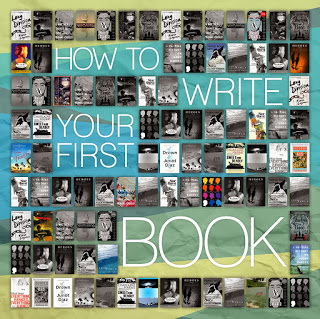The following 10 commandments are Elmore Leonard’s famous advice. I mostly agree with them, though I do like to write about weather, and creating brief descriptions of characters (especially those things which are choices the characters make about their appearance, like dress, grooming, etc.) seems perfectly okay to me.
The one thing that jumps out at me about Mr. Leonard’s commandments is that they are mostly in the “thou shall not” vein. My list that follows Elmore Leonard’s list are different on that score. From teaching writing for 40 years or so, I collected these eleven things (and more that I won’t list) as signposts that I hope point the way to writing better stories. And having more fun.
Here’s Elmore Leonard’s list.
1. Never open a book with weather.
If it’s only to create atmosphere, and not a character’s reaction to the weather, you don’t want to go on too long. The reader is apt to leaf ahead looking for people. There are exceptions. If you happen to be Barry Lopez, who has more ways to describe ice and snow than an Eskimo, you can do all the weather reporting you want.
2. Avoid prologues.
They can be annoying, especially a prologue following an introduction that comes after a foreword. But these are ordinarily found in nonfiction. A prologue in a novel is backstory, and you can drop it in anywhere you want.
There is a prologue in John Steinbeck’s Sweet Thursday, but it’s O.K. because a character in the book makes the point of what my rules are all about. He says: “I like a lot of talk in a book and I don’t like to have nobody tell me what the guy that’s talking looks like. I want to figure out what he looks like from the way he talks. . . . figure out what the guy’s thinking from what he says. I like some description but not too much of that. . . . Sometimes I want a book to break loose with a bunch of hooptedoodle. . . . Spin up some pretty words maybe or sing a little song with language. That’s nice. But I wish it was set aside so I don’t have to read it. I don’t want hooptedoodle to get mixed up with the story.”
4. Never use a verb other than “said” to carry dialogue.
The line of dialogue belongs to the character; the verb is the writer sticking his nose in. But said is far less intrusive than grumbled, gasped, cautioned, lied. I once noticed Mary McCarthy ending a line of dialogue with “she asseverated,” and had to stop reading to get the dictionary.
5. Never use an adverb to modify the verb “said” …
…he admonished gravely. To use an adverb this way (or almost any way) is a mortal sin. The writer is now exposing himself in earnest, using a word that distracts and can interrupt the rhythm of the exchange. I have a character in one of my books tell how she used to write historical romances “full of rape and adverbs.”
6. Keep your exclamation points under control.
You are allowed no more than two or three per 100,000 words of prose. If you have the knack of playing with exclaimers the way Tom Wolfe does, you can throw them in by the handful.
7. Never use the words “suddenly” or “all hell broke loose.”
This rule doesn’t require an explanation. I have noticed that writers who use “suddenly” tend to exercise less control in the application of exclamation points.
8. Use regional dialect, patois, sparingly.
Once you start spelling words in dialogue phonetically and loading the page with apostrophes, you won’t be able to stop. Notice the way Annie Proulx captures the flavor of Wyoming voices in her book of short storiesClose Range.
9. Avoid detailed descriptions of characters.
Which Steinbeck covered. In Ernest Hemingway’s Hills Like White Elephants what do the “American and the girl with him” look like? “She had taken off her hat and put it on the table.” That’s the only reference to a physical description in the story, and yet we see the couple and know them by their tones of voice, with not one adverb in sight.
10. Don’t go into great detail describing places and things.
Unless you’re Margaret Atwood and can paint scenes with language or write landscapes in the style of Jim Harrison. But even if you’re good at it, you don’t want descriptions that bring the action, the flow of the story, to a standstill.
11. Try to leave out the part that readers tend to skip.
A rule that came to mind in 1983. Think of what you skip reading a novel: thick paragraphs of prose you can see have too many words in them. What the writer is doing, he’s writing, perpetrating hooptedoodle, perhaps taking another shot at the weather, or has gone into the character’s head, and the reader either knows what the guy’s thinking or doesn’t care. I’ll bet you don’t skip dialogue.
My most important rule is one that sums up the 10.
If it sounds like writing, I rewrite it.
Or, if proper usage gets in the way, it may have to go. I can’t allow what we learned in English composition to disrupt the sound and rhythm of the narrative. It’s my attempt to remain invisible, not distract the reader from the story with obvious writing. (Joseph Conrad said something about words getting in the way of what you want to say.)
If I write in scenes and always from the point of view of a particular character — the one whose view best brings the scene to life — I’m able to concentrate on the voices of the characters telling you who they are and how they feel about what they see and what’s going on, and I’m nowhere in sight.
What Steinbeck did in Sweet Thursday was title his chapters as an indication, though obscure, of what they cover. “Whom the Gods Love They Drive Nuts” is one, “Lousy Wednesday” another. The third chapter is titled “Hooptedoodle 1″ and the 38th chapter “Hooptedoodle 2″ as warnings to the reader, as if Steinbeck is saying: “Here’s where you’ll see me taking flights of fancy with my writing, and it won’t get in the way of the story. Skip them if you want.”
Sweet Thursday came out in 1954, when I was just beginning to be published, and I’ve never forgotten that prologue.
Did I read the hooptedoodle chapters? Every word.
Here’s my list with a brief explanation of each one.
1. The basics: Show don’t tell. For illustration purposes I use something I call “the banana ladder.” The banana ladder goes like this: at the bottom are the most concrete and imagistic words, like banana. On the rung above that is: Fruit. Which is more abstract, or a larger category of things and less concrete and imagistic.
Above that is: Food. An even larger category of things and so abstract it’s pretty vague. And above that is: nourishment. A word that is more an idea than a physical thing. Good fiction is made up of things. Objects that have a sensory presence in the world. Beginning writers tend to use words farther up the list. Good writing is full of bananas. Peel them, smell them, eat them.
2. No bathtub scenes. Passive writers often create passive heroes, idealizing inactivity and introspection. In all my years of reading student stories, there’s an opening scene that shows up over and over. The main character is sitting somewhere (often in a bathtub, which is strange) and they are thinking. Too much thinking is dull. And too much of it in the first few pages, can doom a story. Get the character up, toweled off and doing something. Action reveals character.
3. Mediocre writers imitate. Great writers steal. Use a model as challenge. I’m not encouraging writers to plagiarize, but believe me, every writer from Hemingway to yours truly, studied a writer they loved and tried to write like them. Long before there were creative writing classes and MFA programs, the world of writing carried on just fine. Writers studied other writers and imitated. Why try to invent the wheel when there are some many very successful wheels rolling along that you can imitate (at least at first until you discover your own voice.)
4. One of the cliches in writer advice is to write what you know. I think that’s silly and not very interesting. I prefer this one. Write what you want to know. That way writing can help you expand your knowledge and worldview instead of simply restating what you already believe.
5. No tears in the writer, no tears in the reader. No surprise in the writer, no surprise in the reader. Robert Frost said something similar. See the quote below. If you aren’t excited about what you’re writing, it’s almost certain that your reader won’t be either. Sadly, the converse is not also true. Just because you’re excited, doesn’t guarantee that your reader will be. But if you’re bored, there is no doubt your reader will be too.
6. Related to #5, if you don’t discover something in the process of writing, it was a waste of time.
“Like a piece of ice on a hot stove the poem must ride on its own melting. A poem may be worked over once it is in being, but may not be worried into being.” (The Figure a Poem Makes) Good writing is the history of a writer’s process of discovery. You start with what you know and work toward the unknown. No discovery, no story.
7. Your character has to want something, has to struggle to get it, overcome those struggles through some special resource or skill that is anchored in their personality, (better that it’s not physical), and winds up changed in some way, usually not getting what they wanted at the outset, but winding up getting something different and becoming a little sadder but wiser. And the big stipulation is that what the protagonist wants should be something a reader could care about. Something whose worth is convincing. But the basic rule is: No trouble, no story. No change, no story.
8. Turn off the Internet.
9. Floss your teeth, use sunscreen.
10. Quit if you can. This advice comes from Harry Crews. It’s a lot easier to do something else than write. If you can’t quit, if it’s in your blood, then all the difficulties (rejection, writers bloc, self-doubt, etc.) will be irrelevant.
11. Ignore all these rules, make your own damn list.




I loved the advice! I’m not a writer but I appreciate understanding the nuances of the art when I read. Thanks for the insight James!
Very interesting Jim. I enjoyed reading it all, esp. your last 4 rules. Thanks for sharing the blog.